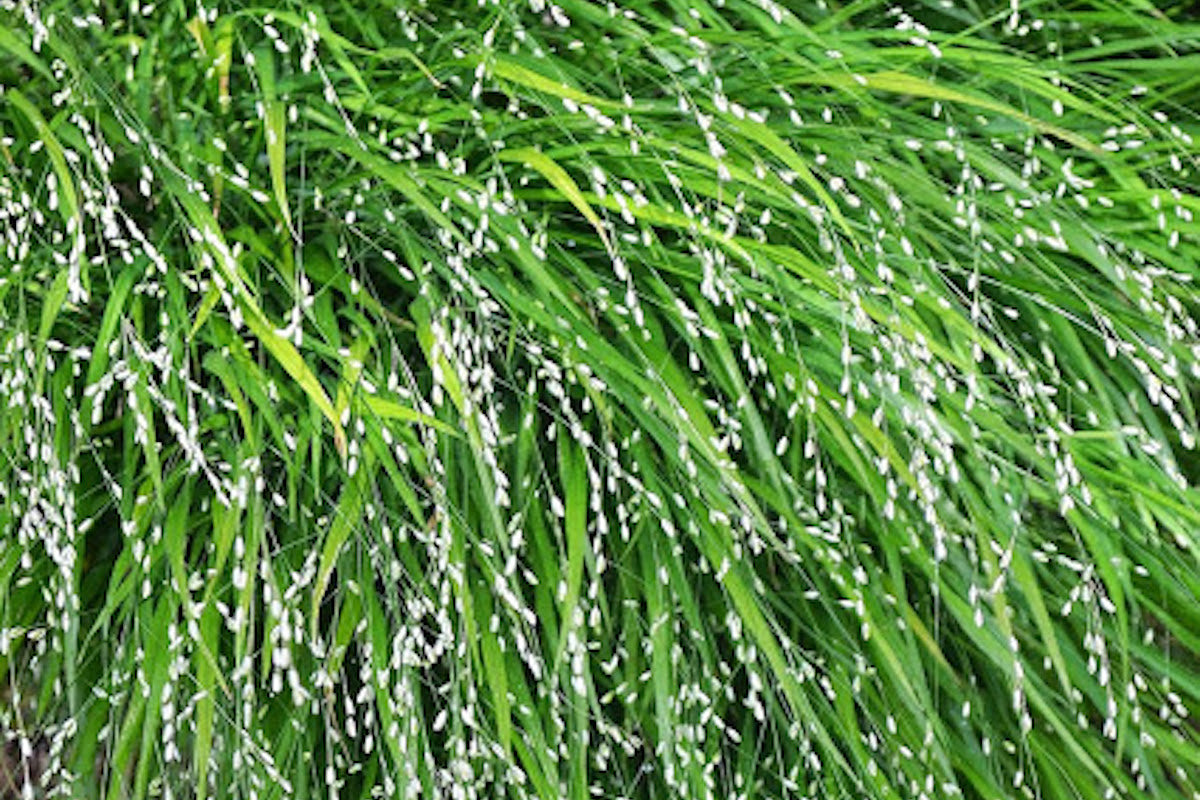Melica uniflora f. albida
Approx. 0.5 litre pot
About this cultivar:
Melica uniflora f. albida is white flowered form of the commonly called wood melick. It is a rhizomatous, perennial grass that is native to Europe, southwestern Asia and northern Africa. Swedish naturalist Anders Jahan Retzius first described the wood melick in 1779. The species name means one-flowered (fertile flowers are solitary).
Flat, thin, rough, linear, pointed, green leaves with ovate, purple-brown, flower spikelets appear in summer in minimally-branched panicles that sway beautifully in the breeze.
It typically grows in slowly spreading clumps and is noted for performing well in dry, shady areas but will grow in most places that aren't too wet. Natively it seems to be found everywhere from the alps to woodlands.
Quite a trendy grass at the moment since it seem to fit everywhere from a prairie style planing to a woodland setting. It can also boast of being native. I think it is quite good at the edge of your garden, blending it with whatever else is growing in the wild or the neighbours fence.
Has the Royal Horticultural Society Award of Garden Merit (RHS AGM), the only Melica to have one!
So, trendy, native, Award Winning, and fits everywhere. Well, I guess you have no excuse not to buy and grow this grass!
A short youtube video I found below:
- Position: Full sun, partial shade, full shade
- Soil: Almost any soil, Dry Soil (prefers dry soil)
- Flowers: April, May, June, July, August, September, October, November
- Other features: -
- Hardiness: H7 - Hardy in the severest European continental climates (< -20°C), Fully hardy, grows well in Ballyrobert
- Habit: Clump forming, tufted
- Foliage: Semi evergreen
- Height: 30 - 60 cm (1 - 2 ft)
- Spread: 30 - 60 cm (1 - 2 ft)
- Time to full growth: 2 to 5 years
- Plant type: Herbaceous Perennial, Grass like
- Colour: Green, yellow
- Goes well with: -
About this genus:
Melica is a genus of perennial grasses known generally as melic or melic grass. The genus name comes from the Greek word melike for a grass. They are found in most temperate regions of the world but are most diverse in South America and temperate Asia.
Melic grasses are clumping to short-rhizomatous grasses. They have flowering clumps bearing spikelets of papery flowers. Some species of melic have corms, lending them the name oniongrass. There are over 100 species so it is hard to be too general!
In the garden, again, hard to be general, but try them like most grasses. Despite their prairie background many types grow well on these islands so they are worth a try - even in shade. Try combining them with other praire style plants- Astrantia, Achillea etc. But don’t be afraid to use them in woodlands or other types if the need arises.


